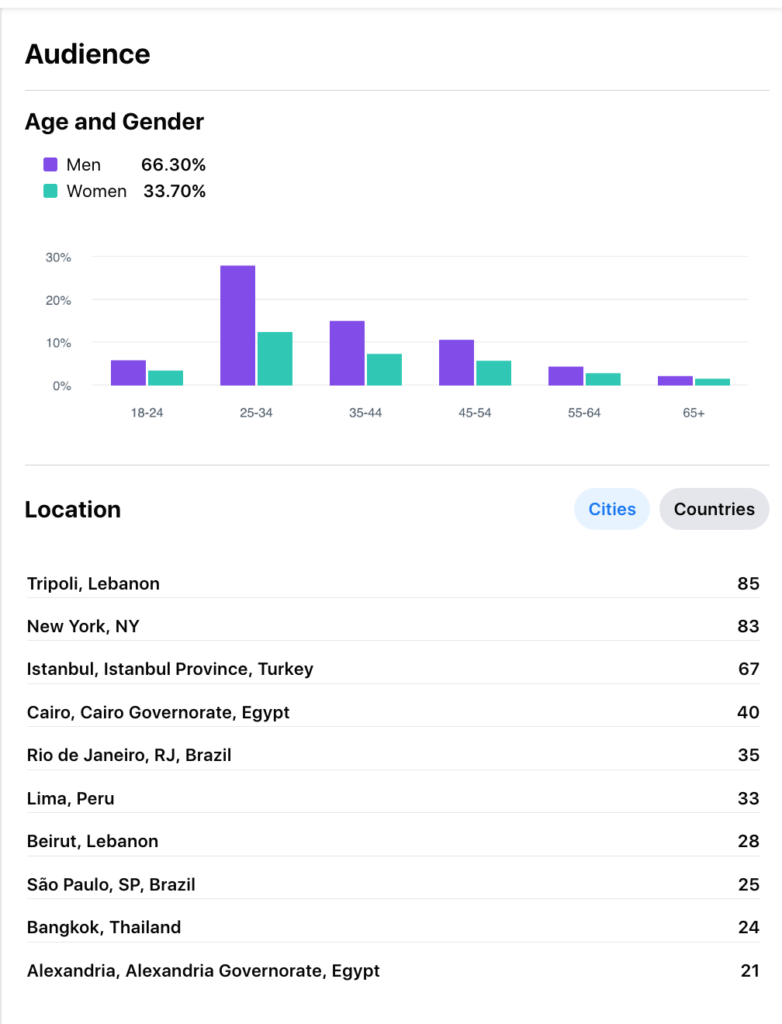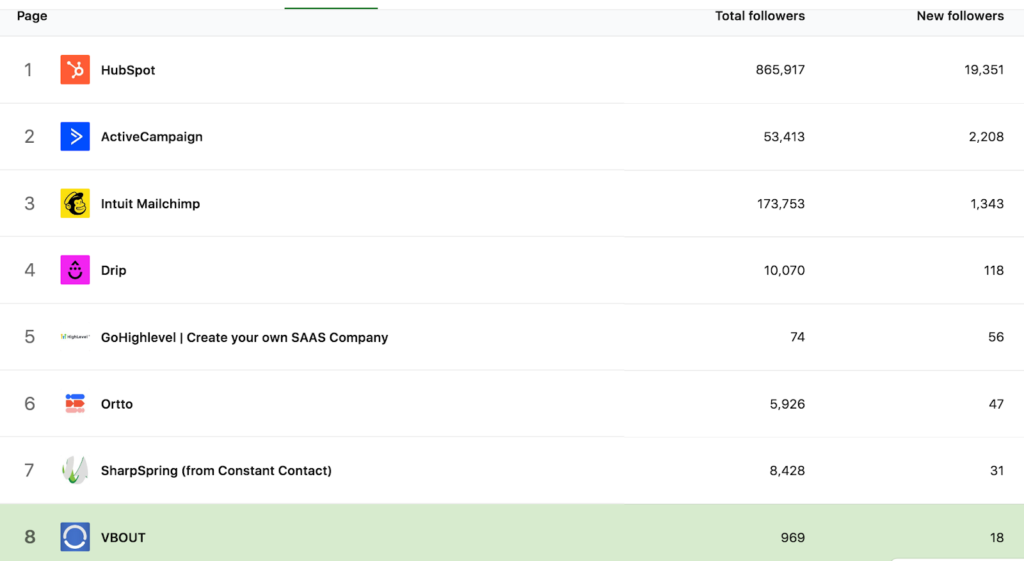5 Elements for an Effective Social Media Strategy
Social media has been transformed from an option for brands into a need that should never be underestimated. According to Neil Schaffer, a whopping 93% of marketers around the world are using social media to manage their businesses.
Social media is an essential marketing component for the creation of your omnichannel approach. Customers are no longer active on just one channel. They would visit your website, subscribe to one of your email lists, then visit your community business page on Facebook to ask a question or reach out to you via messenger. So why don’t you use this opportunity to drive engagement and push your leads to convert?
In other words, how do you build a successful social media marketing strategy for your business?
By identifying the main social media practices that suit your business and putting them into action, you will be on the right track to meet your expectations and help your business grow.
In this article, you will find out the five essential steps that you should use in order to create an effective social media marketing strategy:
1. Determine Your Goals
When you determine the purpose of using social media for your business, you will be able to find out what posts you should publish to maximize engagement.
For instance, if you want to target top-of-the-funnel leads (TOFU), your goal should be building awareness. At this stage, these leads haven’t heard about your brand, so you need to grab their attention first before nurturing them throughout the funnel.
Another goal can be to drive traffic to your website and boost your conversions. In this case, you need to think about providing all the required resources to capture these leads and drive them to your website to take action. So, the second goal could be to find leads who are at the top as well as the middle-of-the-funnel (MOFU).
Retaining clients might be your third goal, where you must keep them engaged with your brand. This objective is suitable for the bottom-of-the-funnel leads (BOFU). At this stage, not only do they stay loyal to your brand but are also likely to recommend you to their friends.
Now that you identified your goals, your next job is to decide on the main social media metrics that you should track for each of the aforementioned goals. The metrics relevant to each goal are the following:
- Creating Awareness -> Impressions, Likes, Comments, Shares, etc.
- Driving Traffic & Conversions -> Landing Page Signups, Website Clicks, Email Newsletter Signups, etc.
- Retention -> Testimonials, Recommendations (Mentions), Page Following Duration, User Generated Content (UGC), Continuous Engagement with Posts, etc.
2. Identify Your Target Audience
If your target audience is defined, it will become much easier for you to decide on the channels that you should pursue and the types of posts to publish. But the question is, how do you identify your target audience? You must have customer profiles, known as buyer personas, which consist of an ideal representation of your target segments.
The components that create these personas are:
- Geographic: The location where they live (country, city, state, region…).
- Demographic: Age, gender, marital status, income, etc.
- Challenges: Customers’ pain points, the obstacles they are facing, and their objections.
- Goals and preferences: What customers look for when they are active on social media and their motivations.
To be able to gather information about the aforementioned components, you have to monitor your analytics on different channels such as Facebook, LinkedIn, Google Analytics, or any specific social media tool you might be using.
For example, Facebook insights show you certain geographic and demographic patterns such as location, age, gender breakdown, the posts published, how many people each post reaches, and their engagement (likes, comments, and shares).


Questionnaires and surveys that ask your customers to fill in certain questions are also great methods that allow you to gather information. Examples of questions are:
- Which channels are they most active on?
- What types of posts do they prefer? Perhaps asking them to rate your posts from highest to lowest (Reels, images, quotes, polls, videos, Q and As, webinars, etc..)
- When are they active on each channel?
These surveys can be done online using tools like SurveyMonkey, Google forms, or through email, SMS, or social media.
By obtaining the answers to all of these questions along with your existing analytics data, you will be able to draw conclusions and create your customer personas accordingly
3. Find Out What Your Competitors are Doing
Monitoring your competitors across all social networks enables you to decide whether you should keep doing what you’re doing or tweak certain steps. This analysis aims not to mimic or steal their ideas but to get what you think best applies to your business, identify what you can do better, and how you need to be different. Using LinkedIn analytics, for instance, allows you to add up to nine competitors and compare the total followers and the newly acquired ones for each brand.

However, an ideal practice would be to spend time searching for what each of your competitors is doing on every channel.
Here’s what you need to observe:
- The types of posts they publish
- The frequency of posting
- The days and hours they post at
- The number of followers they have across each channel
- The engagement with each of their posts (impressions, likes, comments, shares…)
Then, you can create a Google Sheet with the five listed elements and fill out the details for reference. That way, you can easily review it to better decide on the forthcoming steps.
4. Create a Content Strategy
Social media is not just focusing on showing one type of content or post format. There’s a variety of posts that you could publish and engage your customers through. These posts can be a link to your article, photos of your operation, team gathering for lunch or special events, polls, quotes, jokes related to your industry, fill-in-the-blank sentences, gifs showing how to use a specific feature of your product, images, how-to-videos, etc.
People love diversity, so always consider posting different formats. And, of course, this is not to forget the power of reels across Facebook, Instagram, and TikTok, where businesses have started leveraging this feature; there has been a rise in TikTok, Instagram, and YouTube users in 2022. Since people generally love videos due to their power of conveying a message within a short time, it would be a good idea to consider focusing on this angle. In the end, you need to check the performance of these posts by measuring the analytics and decide which channel(s) you must focus on and invest more in the future.
5. Allocate the Required Budget
Allocating a budget is needed, especially if you decide to go with paid ads. Paid ads are not cheap but they would bring you tons of traffic and conversions if you know their basics and the practices that you need to follow. Regardless of your business size, this should be definitely done after recognizing your goals and strategy. Is the purpose of these ads to generate awareness and get new followers? Is the purpose to retarget your website visitors to convert them into leads? Is the purpose to redirect them to a specific landing page to buy your product, download an ebook, sign up to attend your webinar, or request a demo? Is the purpose to push cart abandoners back to complete their purchase orders? Is it a Google search ad or a display ad? All these would give you a clear figure of how much you would like to spend. This is not to mention the channels that you want to use for paid ads, the impressions volume you would like to get, the number of expected conversions on a daily basis, the duration of the ad, and so on…
If you’re a small business, you may still afford paid ads but you need to start with a low budget and see how it goes. If it’s working, you can raise it next time. If not, you need to tweak certain elements of your ad, try another channel or create a new campaign.
Conclusion
Every goal can be attained if it’s followed by a rational and actionable plan. Although plans and objectives would vary from one business to another, the five major practices listed above are useful to assist you in meeting your social media goals.
The process should start with outlining your goals, finding the main metrics relevant to each goal, knowing your target audience by building customer personas, checking out what your competitors are doing across different channels to be able to create something better, publishing different types of social media posts and allocating the required budget.









